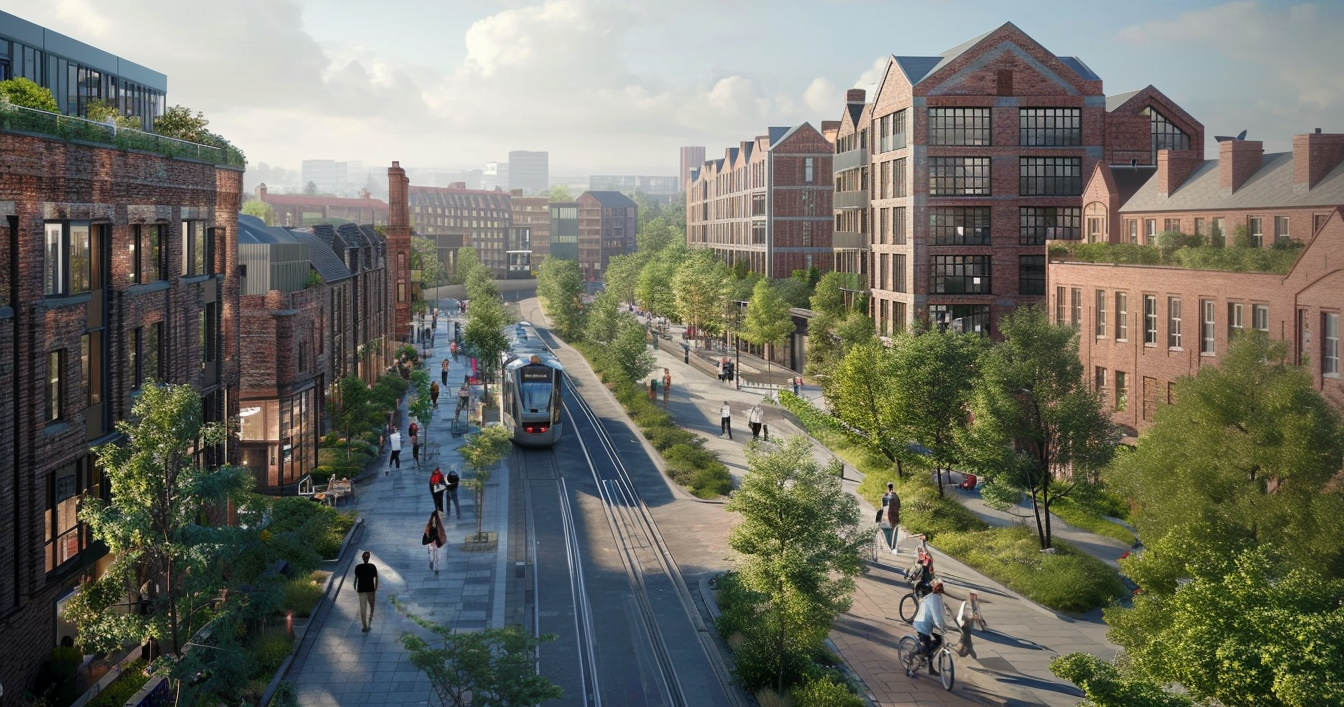Labour has often repeated its ambitions to build a generation of New Towns to deliver 1.5 million new homes. What might have escaped most people’s attention, however, was what these towns might actually be and look like. After all, there is a big difference between successful historic extensions to cities, such as Edinburgh’s New Town or the recent regeneration of Kings Cross both complete with vibrant communities and places to work and play and with many housing developments of recent times, where residents would be lucky to see one shop and a bus more than once a day.
Labour’s announcement on the 20th May called for a ‘New Towns Code’ to ensure developments create sufficient affordable housing, use characterful design for beautiful buildings and tree-lined streets and plan development layouts at high density to efficiently use land linking to existing towns and city centres. It will also require guarantees for the infrastructure built within new developments to include the right transport links, and provision of healthcare and schools and finally the access to nature and parks alongside greenery within developments.
The call for a New Towns Code, and a focus on quality as well as quality, is welcome. For years now at Create Streets, the design practice and think tank I lead, we have advocated for using design codes, a sort of cookbook for new homes, to de-risk the creation of beautiful and sustainable new town extensions. We believe beautiful and sustainable design helps to boost housing delivery by winning over residents who are understandably fed up with the quality of new housing nearby and by applying ‘gentle density’ – the higher level of density associated with our historic towns and cities, to deliver these homes on less land.
The housing crisis is a big problem and will require a scale of ambition to match it. The United Kingdom is suffering from an acute shortage of homes, estimated at 1.5 to 4.3 million. This housing shortage has led to a severe generational inequality leaving renters and aspiring homeowners with unaffordable costs and savings targets during a cost-of-living crisis.
The standard model for delivering new homes will not and cannot solve this. We have one of the most concentrated housebuilding markets in the world, and this lack of competition has eroded the focus on customer preferences for what new housing development looks like and how it functions. Create Streets’ research and experience with design and masterplans, however, has shown that delivering locally popular housing architecture helps to turn NIMBYs into YIMBYs and leads to happier and healthier communities.
This concentrated market and inadequate regulatory regime also means that housebuilders are typically poor at delivering the infrastructure, commercial space, services, shops, schools, public transport and health services that comprise what we all know to be a properly functioning town or city. A 2020 survey by University College London found that at least three quarters of new housing developments were mediocre or poor.
The result is a narrow market of low-density, unsustainable housing sprawl that delivers low numbers of homes, takes up far more land than necessary, and does not provide the agglomeration effects required to support local economic growth or sustainable transport. The failure to integrate transport and housing development in the planning system means that most large housing developments require vast government subsidies for road-building. Once built, these low density, low amenity residential developments then lock in unsustainable patterns of transport, social isolation and low productivity.
Create Streets have suggested five design principles to drive growth across new town building including a ‘town-first not a field-led’ approach, using gentle density development with more terraced houses and mansion blocks, building vision-led towns around high-quality public transport, using a mix of uses and setting design codes to empower small and medium sized builders.
Gentle density can deliver more homes on less land than the conventional volume housebuilder model, thereby reducing the impact of development on the environment and the landscape, creating local economic growth and allowing residents to move around in greener, more affordable ways. It will be crucial that new town extensions and towns are created around fast and regular public transport to support the local agglomeration benefits you can achieve from density and prevent future decades of congestion clogging up our roads.
It is time for us to move from being housebuilders to becoming townbuilders. This will require a concerted effort to join up the planning and delivery of housing, infrastructure and transport. Ultimately it will require us to create streets for our children to play in, create neighbourhoods with shops, services and schools to grow up in and create towns that drive the growth to deliver prosperity and public services.
Find full coverage in The Times here, our news story here and the short report here.
David Milner, Director at Create Streets


